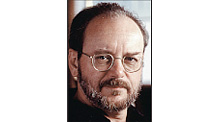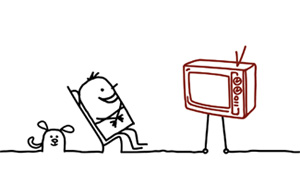More About the CALM Act: Compliance With B.S. 1770-1

You may recall that my February column dealt with how the change in audio levels between channels has diminished, perhaps in response to the CALM Act. For that column, I took some actual level measurements in my studio and subsequently reported that those levels seemed much more consistent than similar levels did in 2009, the last time I made such measurements. I thought this was pretty good news.
I received an e-mail from Patrick Waddell of Harmonic, (and chair of the ATSC TG1/S6 Group, for Video and Audio Coding), who wrote:
"Your most recent TVTech article on CALM is a bit puzzling—you're using the wrong measurement techniques... You need a BS.1770-1 compliant tool. One of the big issues in the industry is getting users to use the right methods and I think you're potentially confusing them here."
He's right. I didn't use B.S. 1770-1. Let me apologize at the outset for any confusion this may have caused.
MY LEVEL MEASUREMENTS
I do have a slight quibble with Patrick's assertion that I used a "wrong measurement technique." We'll get to that. But first, let me discuss why I didn't use B.S. 1770-1. There are three reasons, all of which were in effect at the time: (1) my measurements had to do with end-user C-weighted Sound Pressure Levels, in comparison with previous such measurements (in 2009); (2) I don't own any B.S. 1770-1 compliant meters or software (remember, I'm not in the TV audio production business); and (3) it never occurred to me to use B.S. 1770-1.

Reason 1 is entirely legitimate from a scientific standpoint. Reason 2 is somewhat legitimate as well, but suggests a certain lack of currency and rigor in my test and measurement toolbox, while Reason 3 is sheer mental sloth (we've all been there, I suspect), for which I apologize.
But let's get into this a little further, because Patrick's challenge is entirely reasonable and legitimate, and it raises some serious issues for you audio persons who read TV Technology. I'd like to spend some time on this, especially on the nature and implications of B.S. 1770-1, what it is, what it does and what it means.
As noted above, my measurements sought to examine the question of variance of audio levels between channels and how this variance has changed (or not) over time. Just so you know, I've been studying this problem since at least 2000, and have consulted with a lot of people about it over the years. I personally and professionally think it has been a major broadcast quality control problem, and the variance (up to 30 dB—1,000:1!—in one horrific case) has been shockingly and grossly unacceptable.
My measurements have always been made in the acoustic realm, at a nominal listening position, to more closely observe the sound levels approximately as delivered to an end-user. In 2007, I added projection TV to my instrumented audio studio/lab, making a terrific home theatre. This also has made such measurements trivially easy to make, and I do them routinely.
What this means is that I've had an informal measurement protocol in place for approximately 12 years, and it has been built in to my home theater operation for the last 6 years. That protocol includes using a calibrated studio monitor system wherein –14 dBFS pink noise at the console output for any speaker yields 85 dBC SPL at the mix position. This is roughly in conformance with cinema production standards.
Where it gets a little less rigorous has to do with the TV feeds from my provider, DirecTV. My Sony receiver has no metering, nor am I able to take a direct digital feed from the receiver into my console. I have informally calibrated the console inputs so that –10 dBu yields –14 dBFS. Where it got a lot less rigorous was that DirecTV's levels varied so much back in 2006 that I was constantly adjusting TV monitor levels downward by 5–15 dB just to be able to stand the TV programming, just like one of those enraged couch potatoes who has written to their congressperson in high dudgeon.
Because I'm not doing any of this for production, I confess I haven't been very fussy about maintaining the trims of the analog inputs to the console. Why bother, if DirecTV isn't going to? This means that my overall TV broadcast levels at the console have changed in undocumented ways over the years.
A 'BENEFICIAL' CHANGE
Nonetheless, the Sound Levels I measured are real, and they are reasonably stable. Further, note that I've supplied you with a quite rich array of signal levels to help you understand what is really happening in these various signals: Lmin, L95, Leq, L5 and Lmax. There's a lot of useful information there! So when I say that a bundle of nine adjacent channels (in my FAV list) varied in Leq by 12.8 dB (C-weighted) in 2009, and a similar but not identical bundle varied by only 4.7 dB (C-weighted) in 2012, that measurement has some basis in both physical reality and truth. It represents a substantial and, I believe, beneficial change in TV broadcast quality control.
Please further note that B.S. 1770-1 had not been written in 2000, when I began making my measurements, and had not yet been mandated in 2009. I've used C-weighting because that's what the film industry uses. Note that if I had switched to a B.S. 1770-1 compliant measurement in 2012, I would have introduced a distorting nuisance variable whose effect on my measurement would (a) possibly be quite significant, and (b) essentially impossible to assess or correct for. Using B.S. 1770-1 for just the 2012 measurements could possibly cause some programs to measure up to 8 dB hotter than my measurement, resulting in a measured variance (in the worst case) of 12.7 dB, while the real measured variance is in fact only 4.7 dB.
Such is the cranky world of test and measurement.
WHAT DOES THIS ALL MEAN?
Patrick Waddell is right, you know—it is confusing. And you should use B.S. 1770-1 when you measure an audio signal intended for TV broadcast. Next month, I'll discuss what B.S. 1770-1 is and does in a little more detail, and I'll follow that up with a report (and measurement) on how B.S. 1770-1 as well as A, B and C weighting all affect signal level. Then we'll get back to shufflers.
Thanks for listening.
Dave Moulton is watching entirely too much TV these days. However, that doesn't mean you can't complain to him at his website, www.moultonlabs.com. Thanks, Patrick!
Get the TV Tech Newsletter
The professional video industry's #1 source for news, trends and product and tech information. Sign up below.

